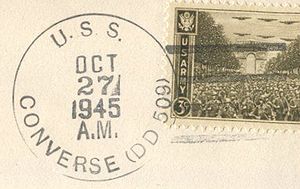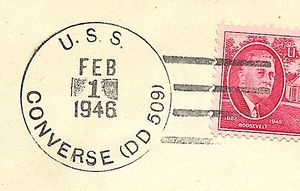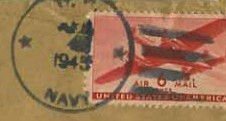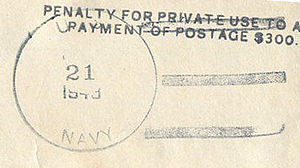CONVERSE DD 509
Ship Name and Designation History
This section lists the names and designations that the ship had during its lifetime. The list is in chronological order.
Keel Laid February 23 1942 - Launched August 30 1942 |
Naval Covers
This section lists active links to the pages displaying covers associated with the ship. There should be a separate set of pages for each name of the ship (for example, Bushnell AG-32 / Sumner AGS-5 are different names for the same ship so there should be one set of pages for Bushnell and one set for Sumner). Covers should be presented in chronological order (or as best as can be determined).
Since a ship may have many covers, they may be split among many pages so it doesn't take forever for the pages to load. Each page link should be accompanied by a date range for covers on that page.
- Covers Page 1 (1943-45)
Postmarks
This section lists examples of the postmarks used by the ship. There should be a separate set of postmarks for each name and/or commissioning period. Within each set, the postmarks should be listed in order of their classification type. If more than one postmark has the same classification, then they should be further sorted by date of earliest known usage.
A postmark should not be included unless accompanied by a close-up image and/or an
image of a cover showing that postmark. Date ranges MUST be based ONLY ON COVERS IN
THE MUSEUM and are expected to change as more covers are added.
>>> If you have a better example for any of the postmarks, please feel free to replace the
existing example.
|
Postmark Type |
Date From to Date To |
Thumbnail Link To Postmark Image |
Thumbnail Link To Cover Image |
|---|
|
Locy Type |
1945-10-27 |
 |
 |
Navy Day 1945
|
Locy Type |
1946-02-01 |
 |
 |
Note:
|
Locy Type |
1945-04-04 |
 |
|
Censored wartime (WWII) use
|
Locy Type |
1943 |
 |
|
Note:
Other Information
CONVERSE earned 11 Battle Stars (WWII)
Earned Presidential Unit Citation
NAMESAKE - George Albert Converse USN (May 13 1844 - MArch 29 1909)
Converse attended Norwich University and was a member of Theta Chi Fraternity. He was appointed Midshipman November 29 1861. He was a pioneer in the use of electricity on board men-of-war, in experimentation with and introduction of smokeless powder in the Navy, and in development of torpedo boats. In command of USS MONTGOMERY C-9 from 1897 to 1899 he took an active part in operations off the coast of Cuba with Admiral Sampson's squadron during the Spanish-American War. He was promoted to Rear Admiral on Oct. 21 1903 serving successively as Chief of the Bureaus of Equipment, Ordnance, and Navigation, continuing as Chief of the latter Bureau for a year after his retirement in 1906. He died in Washington, D.C., 29 March 1909. Rear Admiral Converse was considered of the ablest officers in the Navy as well as known as an expert on ordnance, especially regarding torpedoes. In 1904, when only the first sixteen “torpedo boat destroyers” were in commission, President Theodore Roosevelt ordered the Navy to convene a board under his leadership to "consider the type and qualities of torpedo vessels and their machinery." The board developed a functional description for future destroyers, which first applied in the design of the Smith and Paulding-class "flivvers" of fiscal years 1907-1911. Rear Admiral Converse was buried in Arlington National Cemetery with full military honors
If you have images or information to add to this page, then either contact the Curator or edit this page yourself and add it. See Editing Ship Pages for detailed information on editing this page.
Copyright 2025 Naval Cover Museum

